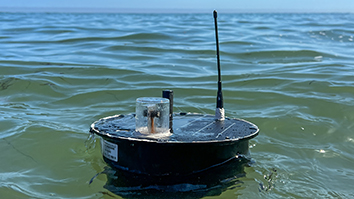Citation
Blanc, B., Rodgers, K. R., Lukat-Rodgers, G. S., & DuBois, J. L. (2013). Understanding the roles of strictly conserved tryptophan residues in O-2 producing chlorite dismutases. Dalton Transactions, 42(9), 3156-3169. doi: 10.1039/c2dt32312e
Abstract
The chlorite dismutases (Clds) degrade ClO2− to O2 and Cl− in perchlorate respiring bacteria, and they serve still poorly defined cellular roles in other diverse microbes. These proteins share 3 highly conserved Trp residues, W155, W156, and W227, on the proximal side of the heme. The Cld from Dechloromonas aromatica (DaCld) has been shown to form protein-based radicals in its reactions with ClO2− and peracetic acid. The roles of the conserved Trp residues in radical generation and in enzymatic function were assessed via spectroscopic and kinetic analysis of their Phe mutants. The W155F mutant was the most dramatically affected, appearing to lose the characteristic pentameric oligomerization state, secondary structure, and heme binding properties of the WT protein. The W156F mutant initially retains many features of the WT protein but over time acquires many of the features of W155F. Conversion to an inactive, heme-free form is accelerated by dilution, suggesting loss of the protein’s pentameric state. Hence, both W155 and W156 are important for heme binding and maintenance of the protein’s reactive pentameric structure. W227F by contrast retains many properties of the WT protein. Important differences are noted in the transient kinetic reactions with peracetic acid (PAA), where W227F appears to form an [Fe(IV)[double bond, length as m-dash]O]-containing intermediate, which subsequently converts to an uncoupled [Fe(IV)[double bond, length as m-dash]O + AA+˙] system in a [PAA]-dependent manner. This is in contrast to the peroxidase-like formation of [Fe(IV)[double bond, length as m-dash]O] coupled to a porphyrin π-cation radical in the WT protein, which decays in a [PAA]-independent manner. These observations and the lack of redox protection for the heme in any of the Trp mutants suggests a tendency for protein radical formation in DaCld that is independent of any of these conserved active site residues.


